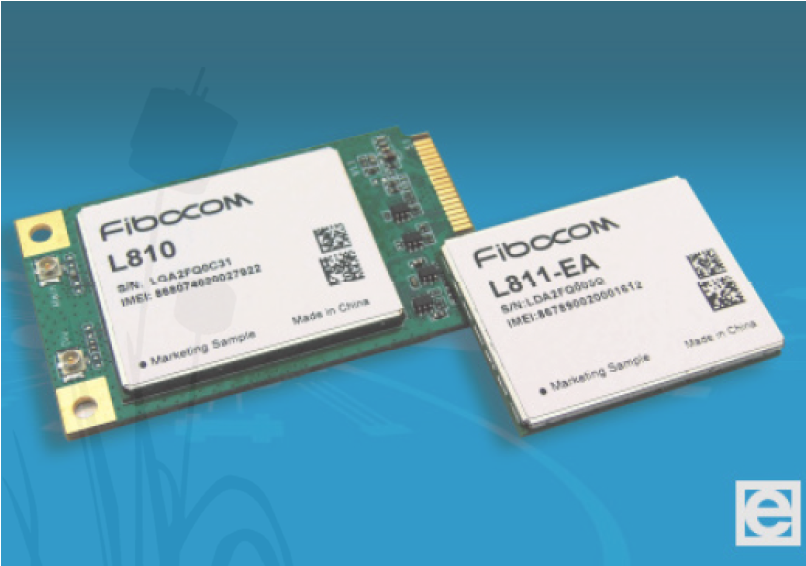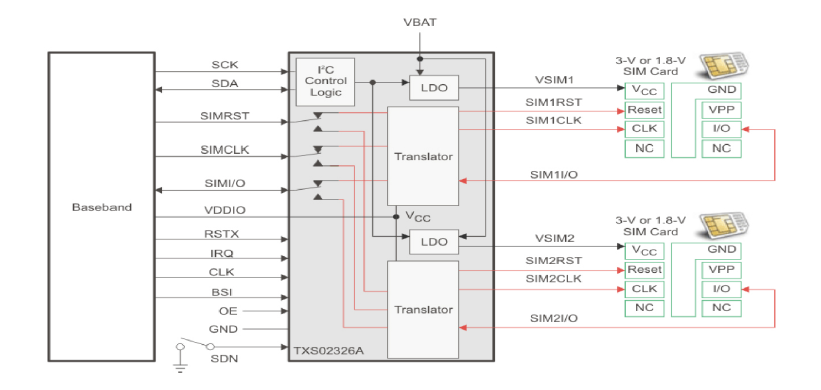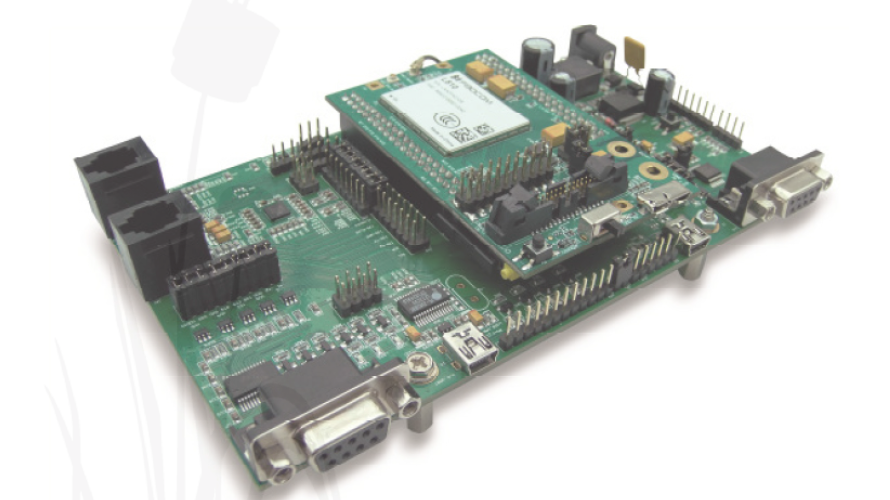Stefan Koltes, Zoltán Kiss- Area Sales Manager - East Europe - Endrich GmbH.
GSM technology in industrial applications – GSM, UMTS or LTE modules
12 October 2016

Summary :
Today, such notions as IoT, Smart Home and Industry4.0 become popular. Behind each of these names, there is a complex network of intelligent devices – sensors, data collection and evaluation modules, medical electronics, or even security systems, – operating in industrial environment, all featuring communication over the Internet.
Significant markets with the promises of high profit are open for developers working in the area above. The basic question for the engineers is which of the wireless technologies fit best to the planned application, because the data transfer between the intelligent device and the network is realized using sophisticated radio modules. It is a serious challenge for designers having less experience on this subject. To select the right module, the planned data transfer rate, the required lifetime of service, the available power supply should be first considered, and also the size of the module, and whether it should be permanently soldered, MiniPCIe or M.2Card should be taken in account. Since the solderable LGA modules are providing higher mechanical strength compared to interchangeable counterparts, these SMD versions are preferred in industrial and automotive applications. Interchangeable modules, however, are allowing more flexibility during application development, and it is up to the customer to judge if they worth the extra cost.
The MiniPCI modules are communicating on the host side using USB interface (USB2.0,HS for LTE) similarly to the M.2 cards adapted to the Intel format. The format selection does not guarantee that the module currently offered by the manufacturer will not be excluded from the product portfolio later, or whether it will be replaced by a next generation model or an another device. In case of such event, when a variation different than the original model is built in, the device often has to be certified again resulting a considerable cost factor. Due to that replacing the hardware module requires software modification and may imply changes in powering. The “module family concept” offered by some manufacturer may not be the ideal solution. All the modules have a sort of nation and provider specific certification, so the first thing to be aware of should be where the component will be used. Regulations in each country of operation must be taken into account, and also, it is important to know if the whole end product must be certified or it is enough to certify the alteration only.
Key point of consideration to select the most suitable technology Overview of standards
The GSM (Global System for Mobile Communication) standard has been introduced to describe the secondgeneration (2G) digital cellular-based network protocol. It is the most wildly spread mobile telecommunication standard used in the industry with nearly 90% market share. The applied enhanced data connectivity (GPRS) is already packet switched having maximum 86 Kbps download and 43 Kbps upload speed. The slow data transfer rate and expected discontinuation of the technology makes its application questionable in new generation devices. Although the currently active GSM cells will not be switched off in the foreseeable future due to the numerous security and automotive applications in use, extension of the cell network cannot be expected as the service providers are rationally moving to new technologies. The currently active cells are expected to remain active until 2026 the latest. Whether this shutdown really happens or not depends on the success of today's active applications in this area and the lobbies behind it.
The Edge (Enhanced Data Rates for GSM Evolution) standard has been invented using a new modulation technique to triple the GPRS data transfer speed – to 1 00 Kbps scale (max 236 Kbps). In remote locations where the number of clients does not ensure the return of investment on expensive technologies (such as 3G) and no digital landlines (DSL) are available, the EDGE remains the best available alternative to provide fair enough speed yet economic internet access. The EDGE is linked to the GSM/GPRS technology, so the possibility of service shutdown may make long term industrial application risky.
UMTS (Universal Mobile Telecommunications System), the third generation (3G) of mobile telecommunication standard is a middle step between old technologies and the LTE. The introduction of UMTS requires major investment due to its higher frequency (21 00 MHz) has lower range and needs more base stations. Also, it is more difficult for this higher frequency to penetrate buildings. The high bandwidth (max 384 Kbps,) the favorable module prices and not last the modules’ backward compatibility with the GPRS should make this technology the primary choice – however, some sources are mentioning that it will give way to the LTE (Long Term Evolution) standard. This statement is underlined by the fact that in large metropolitan areas the number of LTE cells is exploding compared to UMTS.
The reason of switching off of frequencies is the regular reallocation of licenses among the providers last happened in 201 5, and due again 10 years later.
| Generation | Technology | Data transfer | Download bandwidth |
|---|---|---|---|
| 1G | AMPS | Analog, connection based | - |
| 2G | GSM | Digital, connection based | 9,6 Kbps |
| 2.5G | HSCSD | Digital, connection based | 57,6 Kbps |
| GPRS | Digital, packet switched | 115 Kbps | |
| 2.75G | EDGE | Digital, packet switched | 236 Kbps |
| 3G | UMTS | Digital, packet switched | 384 Kbps |
| 3.5G | HSPA | Digital, packet switched | 14,4 Mbps |
| 4G | LTE | Digital, packet switched | 150 Mbps |
| 4G | LTE Advanced (LTE-A) | Digital, packet switched | 300 to 600 Mbps |
| 4.5G | LTE Advanced Pro (LTE-AP) | Digital, packet switched | 1 Gbps |
GPRS modules for instantly marketed products and LTE Modules for Future Applications
Though the GSM/GPRS technology is wildly accepted in industrial applications, we mentioned that it has no future in the following 10-15 years.
The LTE has the advantage of facing the future, however, but it does not provide backward compatibility with GSM or UMTS technologies making application in remote locations problematic and it is also expensive, costs even 8 times more than a GSM module. Currently, modules with 21 Mbps download and 4.7 Mbps upload speed are available, the customer has to decide if download or upload speed is more important for a specific application. In security, metering and industrial process control applications the upload speed is usually determinative. Looking at applications in the past, a temperature sensing or state reporting application required only a few byte transfer which was easily served by the 42.8 Kbps transfer speed, much more bandwidth will be necessary in the future. The LTE standard provides 300 Mbps download and 50 Mbps upload speed. Let’s see a classical example of a baby watch (Babyphone) application.

At the beginning, sound transfer was enough, but recently forwarding video sequence and sensor data is becoming necessary in order to keep the market share. Since IoT applications are requiring many kind of communication between the Cloud and the process control, and also, the firmware updates are becoming more and more complex, the future leads to the widespread of LTE technology. In case of low data rate requirement there are now technologies available like nbIoT, which we will detail in a new white paper. The market’s expectation toward module manufacturers today is, providing communication with previous generation (GPRS) devices on one hand, and avoiding the need of complex hardware re-design when utilizing available software resources is on the other. Another argument to go back to GSM/GPRS, Edge and UMTS is providing location independent operation. Facing the fact that undeveloped areas in Europe the LTE service is not available everywhere, it is wise to provide a backup solution beside the LTE so as to ensure location independent operation in the forthcoming years. The L8XX series modules from Fibocom are providing backward compatibility all the way to GSM/GPRS beside the ability to use 300Mbps download speed and having enough potential to avoid hardware modification in the following years.
Important principle is the accessibility of devices in case of service failures
As an example, the network of a major provider has become inaccessible in a large part of Germany in March 201 6. Redundant networking should be applied to avoid problem in such cases.
Two way of implementation:
- The controller communicating in Ethernet connection is located in a building: The device is communicating using it own Ethernet card to communicate with the server. If this connection is lost, the LTE card wakes up automatically and the wireless communication takes over the rule of the Ethernet network. As soon as the Ethernet network is up again, the LTE card switches off, and the system will be using the Ethernet communication again.
- The controller is operating outdoor, and there is no Ethernet access:In this case the module has 2 multiplexed SIM cards from different providers as shown on figure 2. It is recommended to use two different modules with different providers’ SIM cards, and even with different technologies (e.g. UMTS and LTE) to implement a fully redundant network topology. With this solution, we can ensure that the device remains on-line either waveband or the cell loss. This is a cost-intensive solution, using the multiplexed SIM card variation is more common.

Step by step application development:
The LTE modules are operating in a different way from hardware point of view than the GSM/GPRS modules already in use. While the host microcontroller is connected to the GSM/GPRS module via UART, the recommended interface for LTE is the USB. It gives the advantage of no interruption in communication between the microcontroller and the module. 50 ohm ribbon cable is recommended to the antenna, and the cable length from the LTE module to the SIM card should be no longer than 1 00 mm. Other important task is providing the suitable power supply, and insisting on the specification of the module manufacturer.
If the power supply has no reserve, the module may fully discharge the battery during the cell query as the momentary consumption may reach even 1 .8 A. This threat mainly occurs in regions with poor network coverage since cell query may take much longer time as usual while the module gets on line. All grounding must be on equal potential around the high frequency area on the PCB. Four layer board is recommended and the DC/DC converters, switching power supply ICs or other wireless communication modules (WLAN, Bluetooth) should be as far from the LTE module as possible.
Concerning the software compatibility between the GPRS, GSM and LTE modules, their application specific AT commands are different while the standard AT commands such as network parameters (AT+MCELL), signal strength (AT+CSQ), and provider information (AT+COPS) queries are the same. The first step is to connect developer board to the PC using RS232 serial port with a SUB D9 connector. Errors due to USB driver installation can be avoided this way. Some of LTE modules go standby if not receiving signal for more than 5 seconds on UART interface. This feature can be turned off by an AT command which is stored in the E2Prom so there will be no problem after restarting. A terminal emulator program like Hyperterminal, TeraTerm, or PuTTY is required to type in the AT commands. Hyperterminal provides reviewing the data stream due to its “Send and Enter” function.

Using TeraTerm is even simpler. The work can be started as soon as the baud rate has been set (11 5200 Baud for LTE) and the correct serial ComPort number has been selected. After the first steps have been successfully cleared, the installation of the USB driver should be done so as we can debug/change our software.
Finally, insert the SIM card into the appropriate module attached to the demo mother board of the demo kit. It is important to disconnect the power supply since the card with the module will be powered through the MicroUSB2.0 or USB 3.0 connections. The module can be operated with AT commands from the terminal emulator program. 204 In the next step, the card containing the module is removed from the motherboard and attached to the custom application with the corresponding jumpers. Developers can make sure that the module is working properly and possible software errors can be eliminated this way. When the final PCB of the application is ready, the application engineers at Endrich along with the supplier are available for consultation on further optimization. We are ready to sign a non disclosure agreement (NDA) to meet confidelity requirements of our customers.
| Share on Facebook | Share on LinkedIn |
References
This article has been published on the following locations:
| # | Media | Link |
|---|---|---|
| 1 | Elektronet 2016/6 | Elektronet : elektronikai informatikai szakfolyóirat, 2016. (25. évf.) 6. sz. 20-23. old. |
| 2 | Elektronet online | GSM-technológia ipari felhasználásra |
| 3 | Hungarian version | GSM technológia ipari felhasználásra – GSM, UMTS vagy LTE modulok használata |
| 4 | TechStory M2M | GSM technológia ipari felhasználásra |
| 5 | New Technology 2018/4 | 2018. (I.évf) 4.sz. 8-11.o. |
| 6 | New Technology online | GSM technológia ipari felhasználásra – GSM, UMTS vagy LTE modulok használata |
| 7 | Revista Española de Electrónica online | Módulos LTE en aplicaciones industriales: ¿cuándo tiene sentido usar GSM, UMTS o LTE? |


